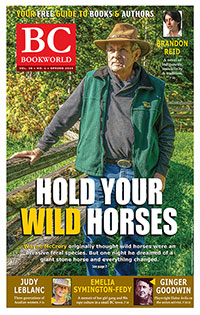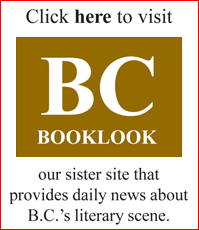Mary and Joe Capilano are not cited as co-authors of Pauline Johnson's Legends of Vancouver but they ostensibly provided the basis for the stories. Chief Joe Capilano was born near Squamish circa 1840 and he lived on the Catholic mission reserve near the Capilano River between North Vancouver and West Vancouver. He worked as a sawmill labourer and stevedore prior to becoming chief in 1895. In 1906 he led a delegation to England to meet King Edward VI and lobby for recognition of his people's land claims. He died on March 11, 1910 in North Vancouver prior to the book's publication in 1911.
Mary Agnes Capilano (1836?-1940) was an important genealogist and storyteller. Her grandfather had met George Vancouver upon his arrival on June 13, 1792 in Burrard Inlet. She was the first-born daughter of Chief Skakhult whose marriage had united two previously warring tribes, the Yaculta and the Squamish. In 1936, without consultation and little compensation, the Minister of Indian Affairs recommended transfer of lands from Capilano Indian Reserve No. 5 to the First Narrows Bridge Company, pursuant to Section 48 of the Indian Act. Three years later, when King George VI and Queen Elizabeth became the first English monarchs to visit Canada, they drove over the Lions Gate Bridge to "honour it." The Squamish requested the royal entourage stop at Capilano Road to receive gifts and to present their own queen, Mary Agnes Capilano. She stood on the roadside, in full ceremonial regalia, with her son Chief Joe Mathias, who had attended the coronation of King George VI in 1911 and who would cast the first Aboriginal ballot in B.C. in 1949. The royals didn't stop. Nobody from the Squamish Band was invited to take part in the honouring ceremony. "This was the only time that we could present my grandmother to the Queen," recalled Chief Simon Baker, "but the car drove past us. . . . It was terrible for my grandmother." In a letter, the Honorary Secretary of the Vancouver Committee for the Reception of Their Majesties reassured the Squamish that their gifts were sent to Buckingham Palace. "We can assure you that every effort was made to fulfill the wishes of Their Majesties and had they desired to stop, it would have, of course, been done. We are assured that Their Majesties took particular pains to acknowledge the homage of their Indian subjects, and that in passing them the rate of speed was considerably lowered."
BOOKS:
Pauline Johnson. Legends of Vancouver (Vancouver: Province newspaper, 1911). With information from Chief Joe Capilano & Mary Capilano.
[BCBW 2005]
Mary Agnes Capilano (1836?-1940) was an important genealogist and storyteller. Her grandfather had met George Vancouver upon his arrival on June 13, 1792 in Burrard Inlet. She was the first-born daughter of Chief Skakhult whose marriage had united two previously warring tribes, the Yaculta and the Squamish. In 1936, without consultation and little compensation, the Minister of Indian Affairs recommended transfer of lands from Capilano Indian Reserve No. 5 to the First Narrows Bridge Company, pursuant to Section 48 of the Indian Act. Three years later, when King George VI and Queen Elizabeth became the first English monarchs to visit Canada, they drove over the Lions Gate Bridge to "honour it." The Squamish requested the royal entourage stop at Capilano Road to receive gifts and to present their own queen, Mary Agnes Capilano. She stood on the roadside, in full ceremonial regalia, with her son Chief Joe Mathias, who had attended the coronation of King George VI in 1911 and who would cast the first Aboriginal ballot in B.C. in 1949. The royals didn't stop. Nobody from the Squamish Band was invited to take part in the honouring ceremony. "This was the only time that we could present my grandmother to the Queen," recalled Chief Simon Baker, "but the car drove past us. . . . It was terrible for my grandmother." In a letter, the Honorary Secretary of the Vancouver Committee for the Reception of Their Majesties reassured the Squamish that their gifts were sent to Buckingham Palace. "We can assure you that every effort was made to fulfill the wishes of Their Majesties and had they desired to stop, it would have, of course, been done. We are assured that Their Majesties took particular pains to acknowledge the homage of their Indian subjects, and that in passing them the rate of speed was considerably lowered."
BOOKS:
Pauline Johnson. Legends of Vancouver (Vancouver: Province newspaper, 1911). With information from Chief Joe Capilano & Mary Capilano.
[BCBW 2005]
 Home
Home



